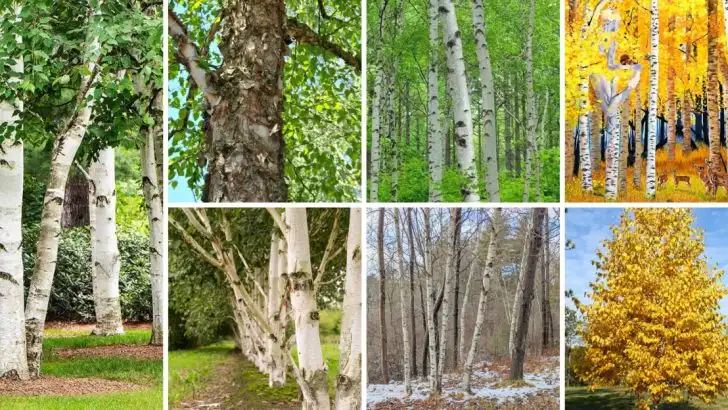Birch trees are a wonderful addition to any landscape, offering beauty and interest year-round. With their distinctive white bark and graceful form, birches provide visual appeal in every season. From spring’s fresh green leaves to winter’s stark beauty, birch trees add character and elegance, no matter the time of year. Plus, they thrive in a variety of climates, making them a versatile choice for many gardeners.
If you’re looking to bring more variety to your outdoor space, there are plenty of birch species to consider, each with its own unique features. Some offer stunning autumn color, while others have striking bark or interesting growth habits. From small yard-friendly varieties to larger specimens that make a bold statement, birches are a reliable, low-maintenance choice for any garden. Let’s take a look at some of the best birch trees that can keep your landscape looking beautiful throughout the year.
Paper Birch

The Paper Birch stands as a classic choice for many gardeners. Its iconic white, peeling bark provides a stunning visual contrast against the landscape. In winter, the bark’s brightness stands out against the snow, while in summer, its leaves offer refreshing shade.
This birch is relatively fast-growing, making it ideal for those looking to quickly enhance their garden’s aesthetic. Beyond its beauty, the Paper Birch is also wildlife-friendly, attracting various bird species. This tree is best suited for cooler climates and does well in moist soil conditions.
River Birch
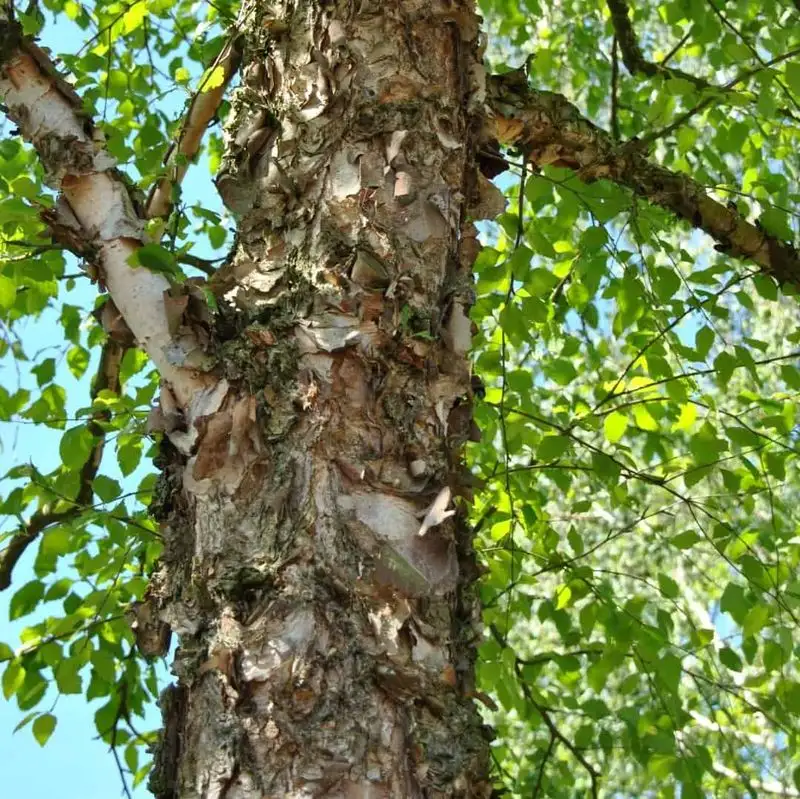
River Birch is known for its remarkable adaptability and unique bark color. Its peeling, cinnamon-colored bark is particularly striking in autumn and winter. Unlike many birches, the River Birch thrives in hot, humid climates and can even withstand occasional flooding.
This tree often features multiple trunks, adding to its visual interest. Its lush, green foliage turns a warm yellow in the fall, providing seasonal beauty. For gardeners dealing with wet or poorly-drained soils, the River Birch is an excellent choice.
Silver Birch
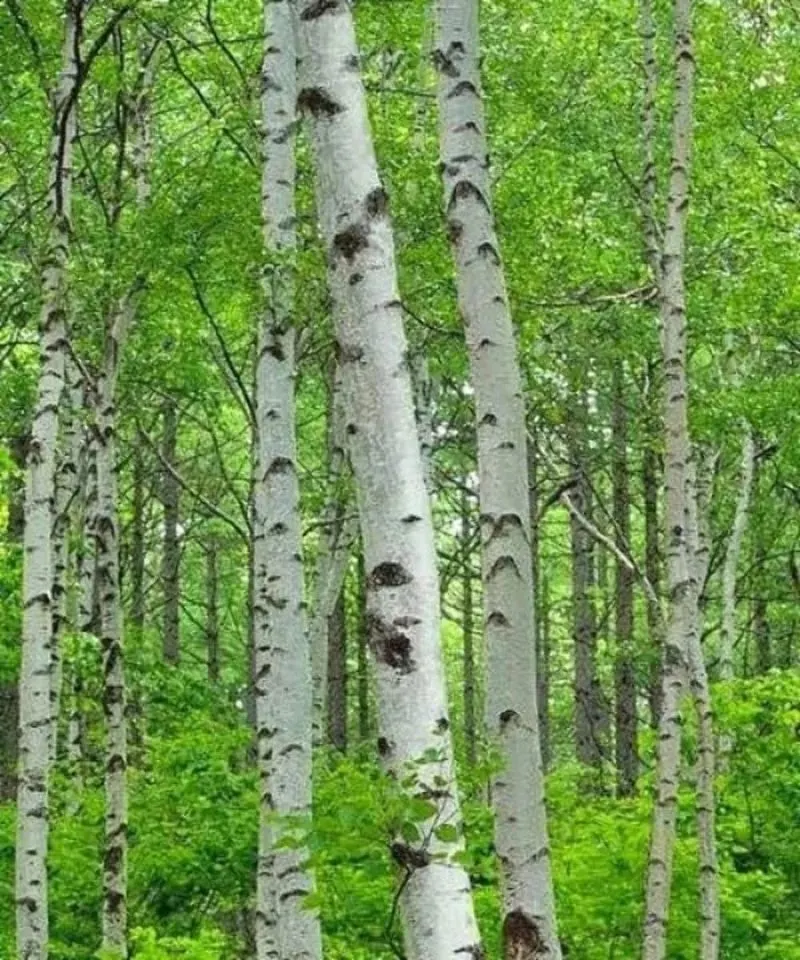
The Silver Birch is admired for its graceful appearance and distinctive, silvery-white bark. This tree’s bark reflects sunlight beautifully, creating a shimmering effect that can brighten any landscape. Silver Birches are often planted as ornamental trees in gardens and parks.
Their leaves, which flutter in the breeze, are a vibrant green in spring and summer, turning golden in the fall. Hardy and versatile, the Silver Birch can grow in a variety of soil types and conditions, making it a popular choice for many gardeners.
Yellow Birch
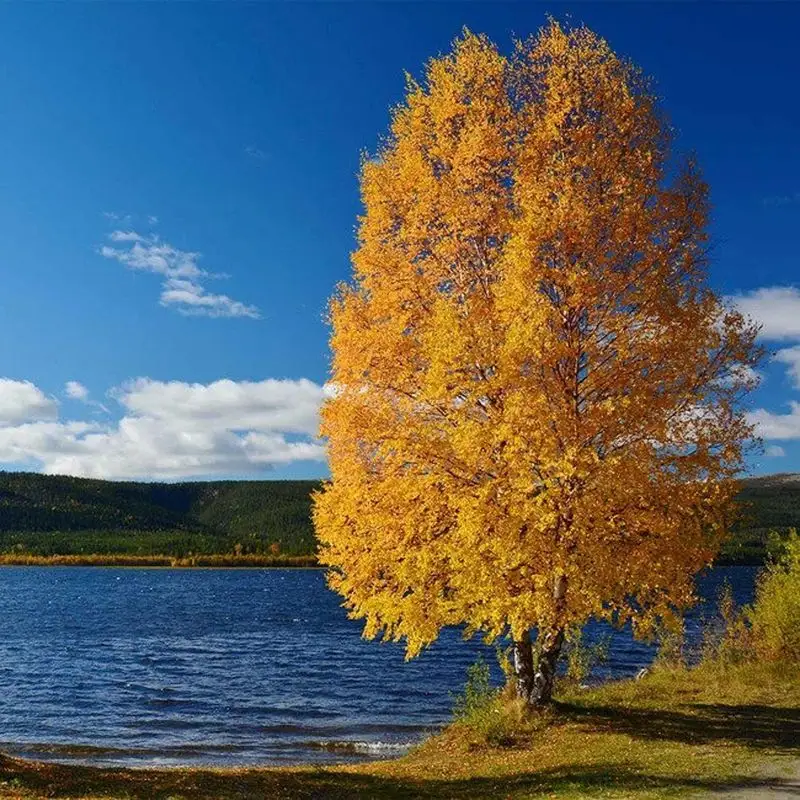
Yellow Birch gets its name from the distinctive, golden-yellow bark that peels in thin, curly strips. This tree’s bark is not only beautiful but also aromatic, adding a sensory element to its appeal.
The Yellow Birch is native to North America and thrives in cooler, moist environments. Its leaves are a brilliant green during the growing season, turning a stunning yellow in the fall. Ideal for naturalizing woodland gardens, this birch provides habitat and food for wildlife, enhancing biodiversity in your garden.
Himalayan Birch
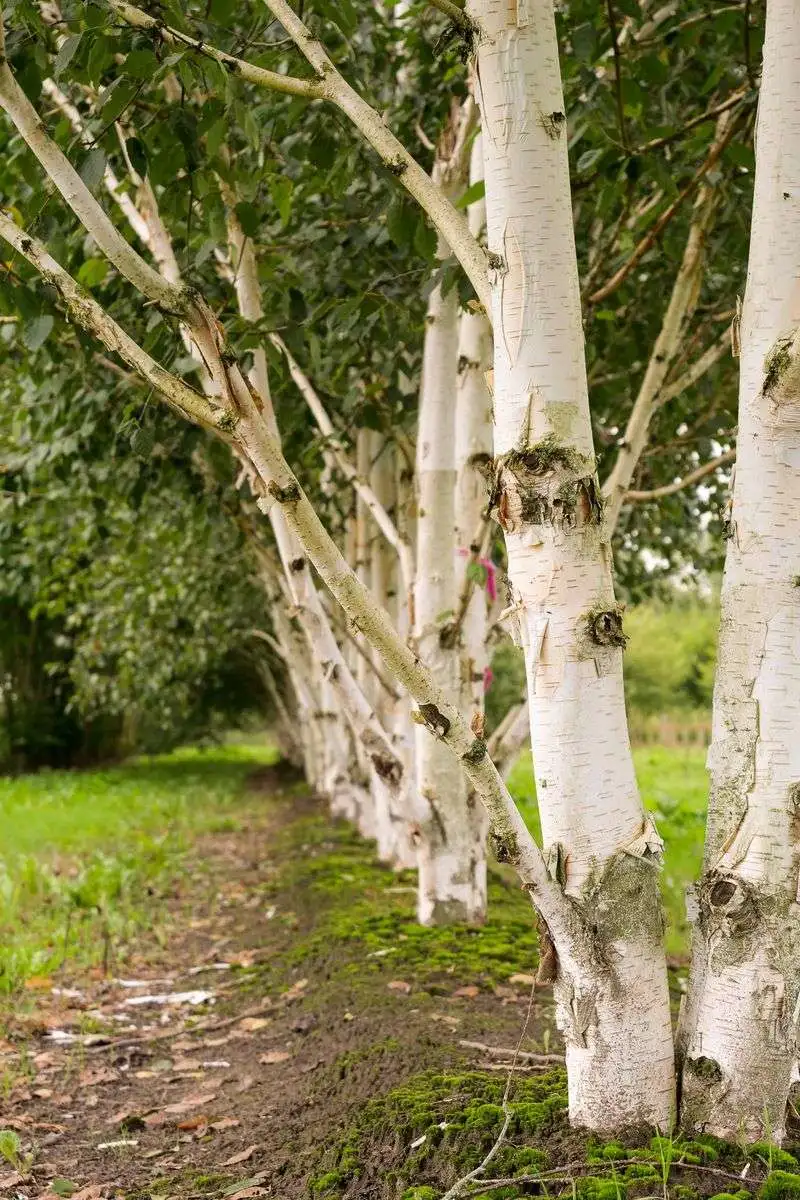
Himalayan Birch offers a touch of elegance with its smooth, white bark and lush foliage. Often seen in decorative landscapes, this tree’s bark remains appealing throughout the year. Its dense canopy provides excellent shade, making it a favored choice for garden lounging areas.
In spring and summer, the leaves are a deep green, transitioning to a buttery yellow in autumn. Himalayan Birch is well-suited for cooler climates and prefers well-drained soil, though it needs ample water during dry spells. It’s a graceful addition to any landscape.
Gray Birch
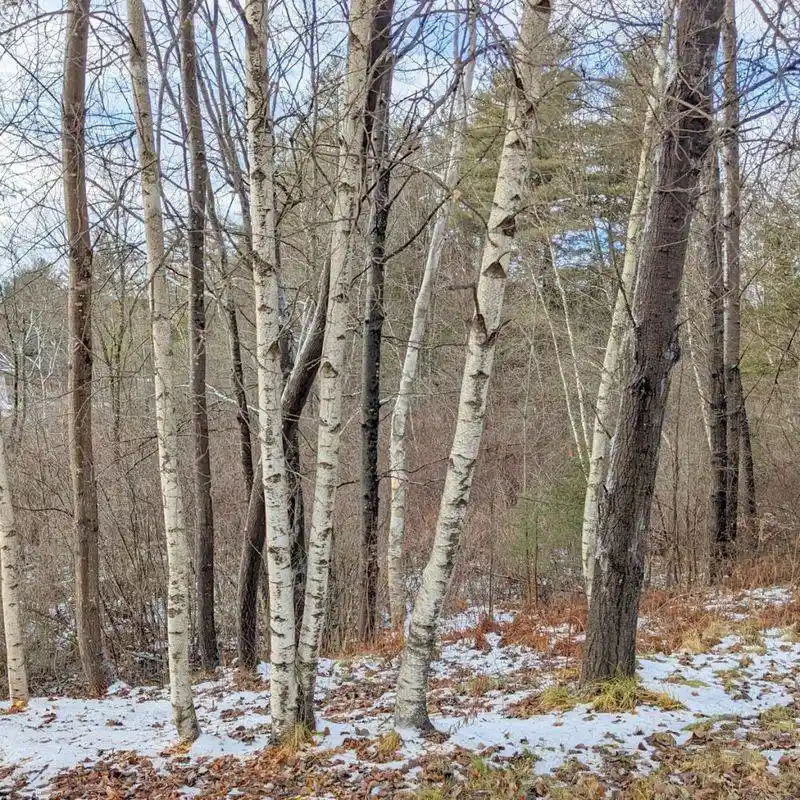
Gray Birch is a uniquely adaptable tree, identifiable by its grayish-white bark and triangular leaves. This birch is often found in poor soil conditions where other trees might struggle. Its resilience makes it a valuable addition to challenging landscapes.
The bark doesn’t peel like other birch varieties, maintaining a smooth texture. Gray Birch leaves are a light green, providing a charming contrast against the bark. This tree grows relatively quickly and is ideal for naturalizing areas where low-maintenance vegetation is desired.
Dwarf Birch
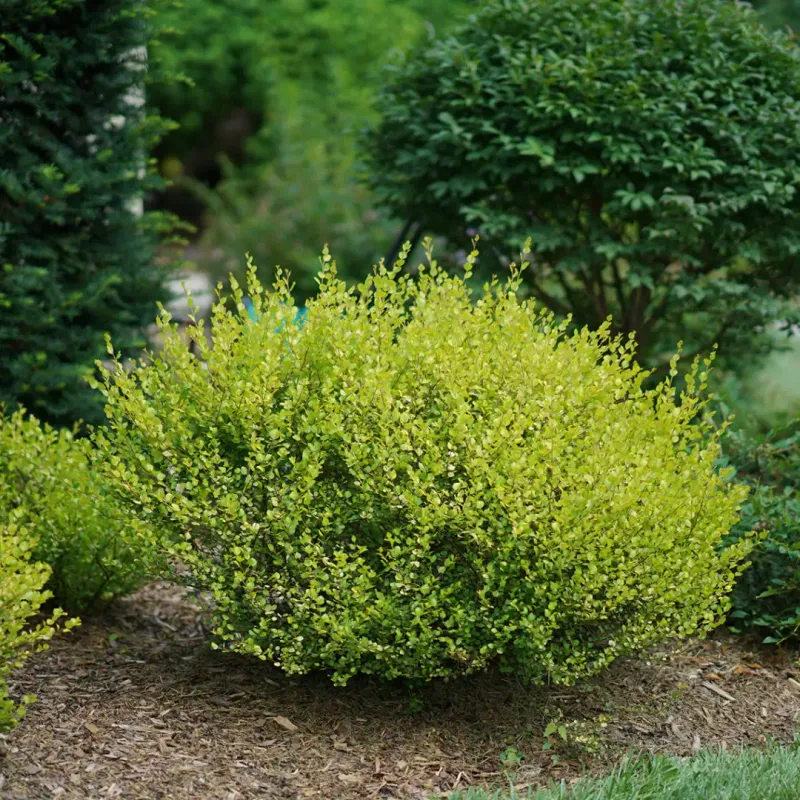
Dwarf Birch is a compact shrub rather than a towering tree, making it perfect for small gardens or container planting. Its low, spreading growth habit provides excellent ground cover.
The leaves of the Dwarf Birch are small and round, turning a striking red or orange in the fall. This shrub is native to arctic and subarctic regions, thriving in cold climates. Despite its diminutive size, the Dwarf Birch is hardy and resilient, able to withstand harsh conditions, while contributing to the ecological balance of the garden.
Japanese White Birch
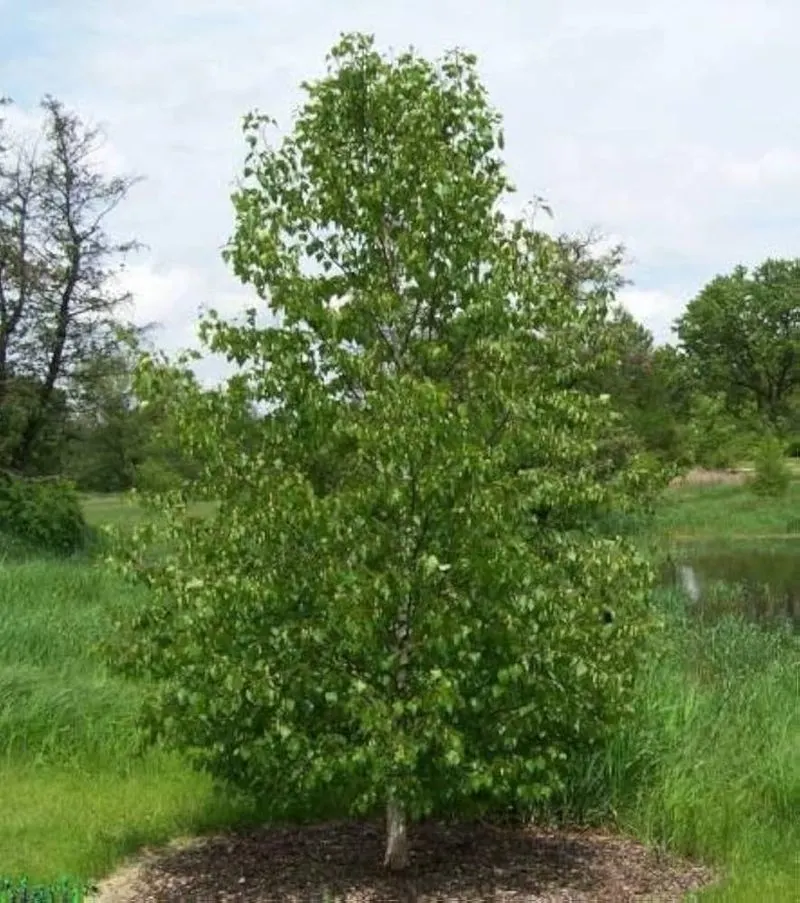
Japanese White Birch is celebrated for its striking, pure white bark and elegant form. It’s a favored choice in Japanese gardens for its tranquil beauty and minimalistic appeal. The bark remains smooth and bright throughout the year, making it a standout feature in any setting.
The leaves are finely serrated, adding a delicate texture to the tree’s overall appearance. In autumn, they turn a lovely yellow, complementing the tree’s white bark. Best suited for temperate climates, this birch thrives in well-drained soils and adds a touch of serenity to gardens.
Black Birch
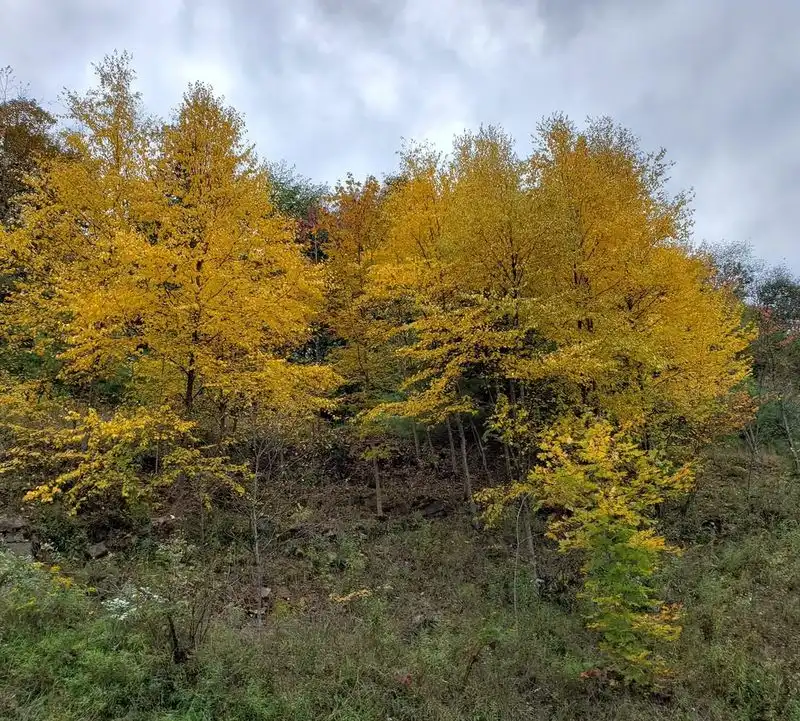
Black Birch, also known as Sweet Birch, is known for its dark, rugged bark and aromatic qualities. The bark, which is almost black, contrasts beautifully with its vibrant green leaves.
This tree is prized not only for its appearance but also for its usefulness, as its bark and twigs produce a wintergreen scent when crushed. Black Birch thrives in moist, well-drained soils and is native to eastern North America. Its hardiness and ornamental value make it a great choice for natural landscapes and border plantings.
Swamp Birch
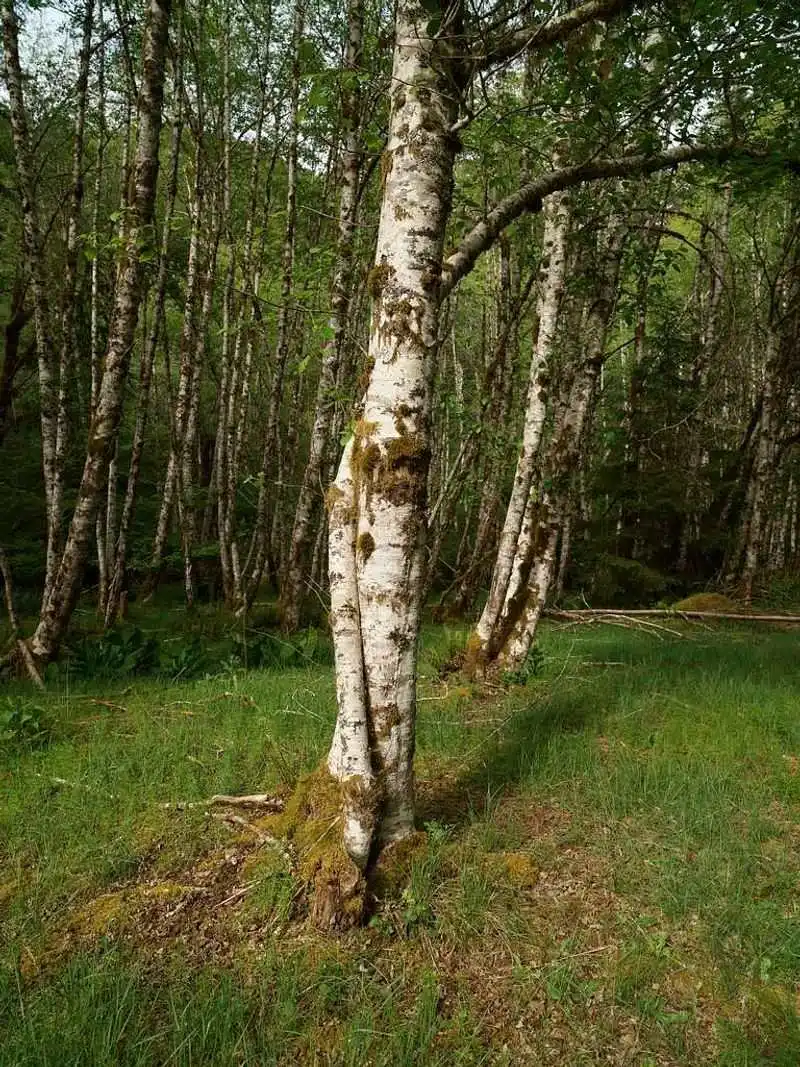
Swamp Birch, sometimes called Red Birch, is an adaptable tree that thrives in wetland areas. It features multi-stemmed growth and reddish-brown bark that stands out in marshy settings.
The foliage is lush and dense, providing excellent coverage and habitat for wildlife. In fall, the leaves turn a warm yellow, adding to the seasonal beauty of your garden. Swamp Birch is particularly useful for erosion control along water bodies. Its ability to flourish in moist conditions makes it an excellent choice for areas prone to flooding.
Bog Birch
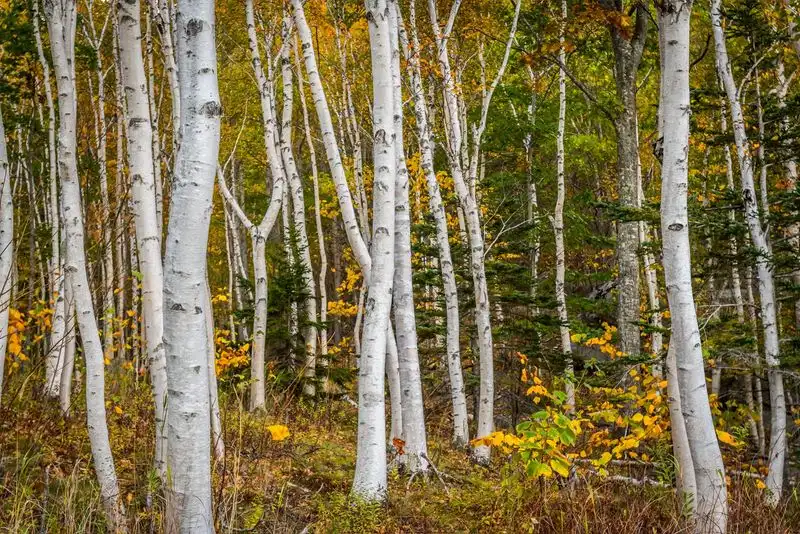
Bog Birch is a hardy shrub-like birch that thrives in wetland environments. Its small, leathery leaves and reddish-brown stems add texture and interest to marshy areas.
This birch is particularly valued for its ability to stabilize soils in boggy conditions, making it a practical choice for erosion control. The Bog Birch’s foliage turns a lovely shade of yellow in the fall, providing a splash of color in wetland gardens. Its resilience and ecological benefits make it a favored choice for naturalized landscapes.
Chinese Red Birch
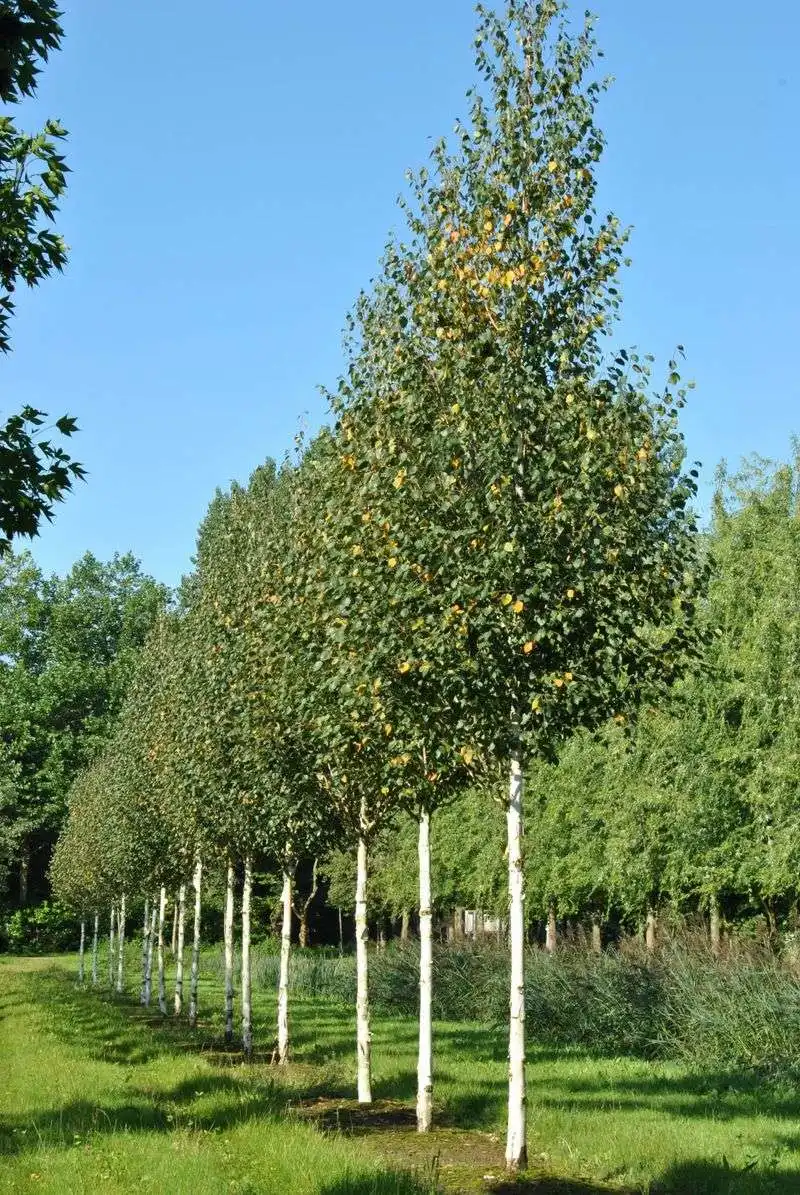
Chinese Red Birch is distinguished by its stunning red bark, which peels to reveal a creamy underside. This vibrant bark color makes it a standout feature in any garden, particularly during the winter months.
The tree’s foliage is dense and lush, offering shade in the summer and turning a brilliant yellow in the fall. Chinese Red Birch prefers well-drained soils and does well in both sun and partial shade. Its unique appearance and adaptability make it a desirable choice for ornamental gardens.
Erman’s Birch
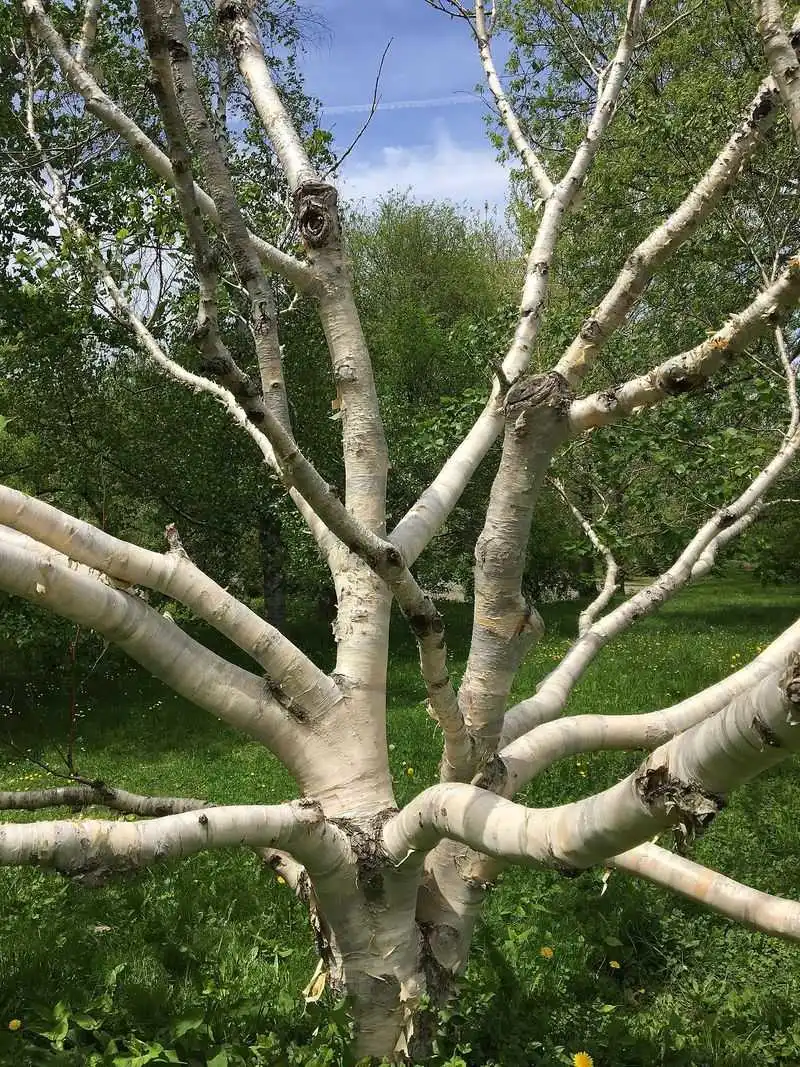
Erman’s Birch is known for its distinctive golden-bronze bark that peels in elegant strips. The heart-shaped leaves add to its charm, turning a warm yellow in autumn.
Native to the mountainous regions of Northeast Asia, Erman’s Birch thrives in cool, rocky environments. It’s an excellent choice for adding vertical interest and texture to a garden. The tree’s ability to withstand cold climates makes it a reliable option for northern landscapes, offering both beauty and resilience.
Betula Pendula
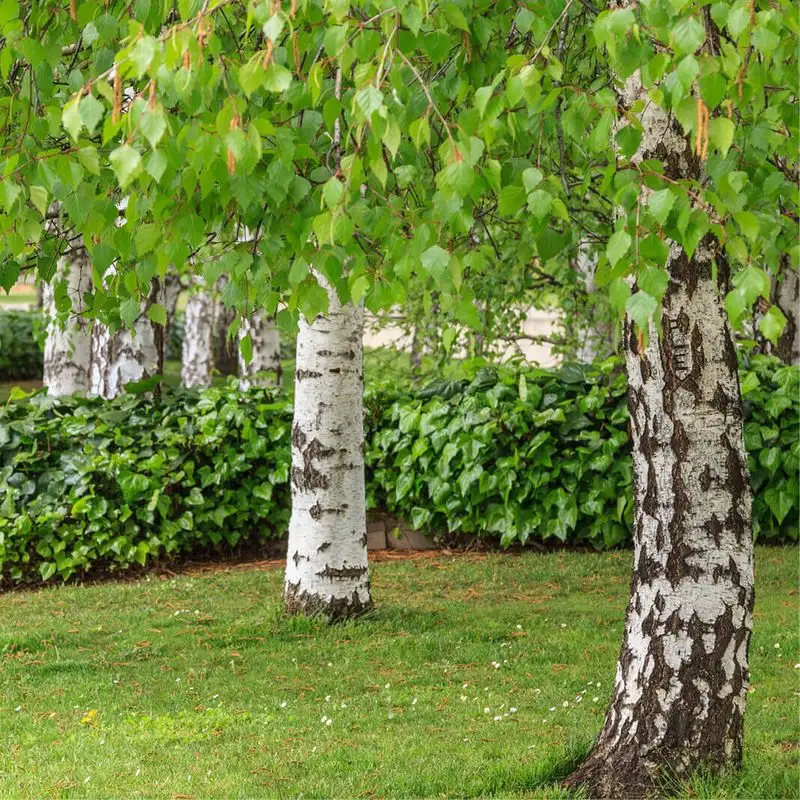
Betula Pendula, commonly known as the Weeping Birch, is celebrated for its pendulous, graceful branches and silvery bark. This tree’s weeping form adds elegance and movement to the landscape.
The bark remains appealing throughout the year, providing winter interest. In spring and summer, the leaves are a fresh green, turning golden in the fall. Betula Pendula is versatile, thriving in a range of soil types and conditions. It’s a popular choice for ornamental planting due to its striking appearance and manageable size.
Downy Birch
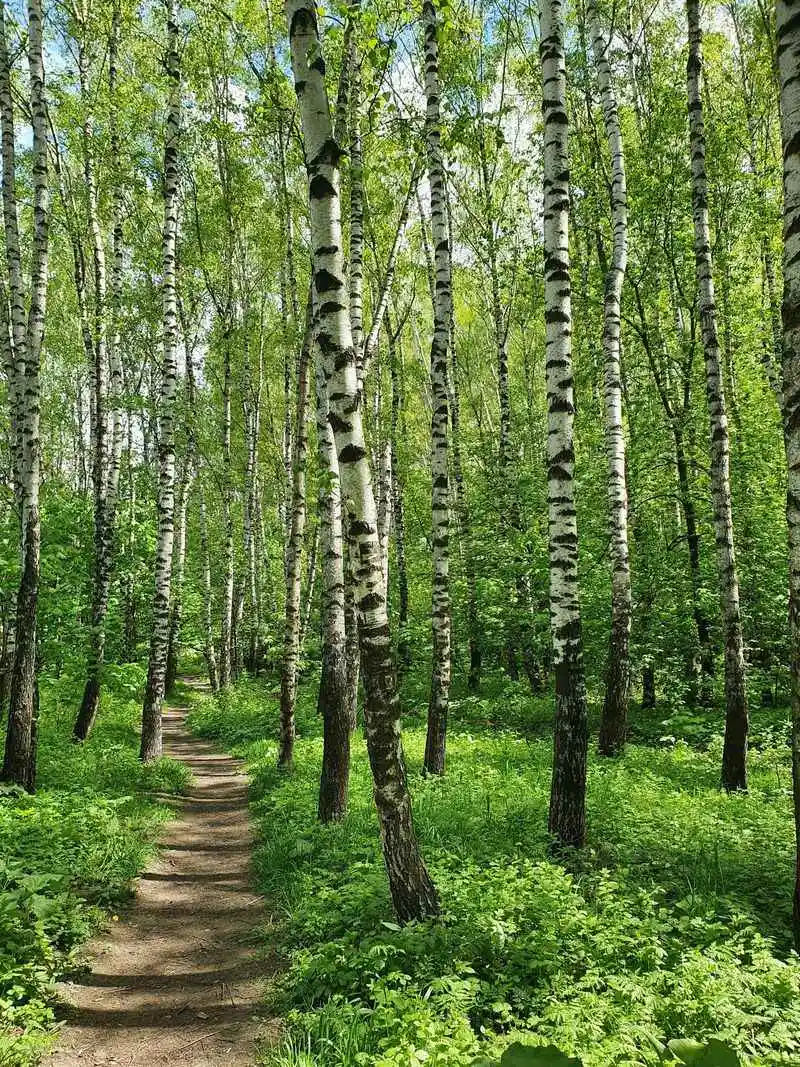
Downy Birch is appreciated for its soft, white bark and elegant form. The bark has a downy texture, providing interest even during the cooler months.
This birch is well-suited for woodland gardens and thrives in moist, acidic soils. Its oval leaves are a bright green, turning a beautiful yellow in the fall. Downy Birch is a resilient tree that can tolerate poor soil conditions, making it an excellent choice for naturalizing areas and adding vertical interest to a garden.
Bogulavsky Birch
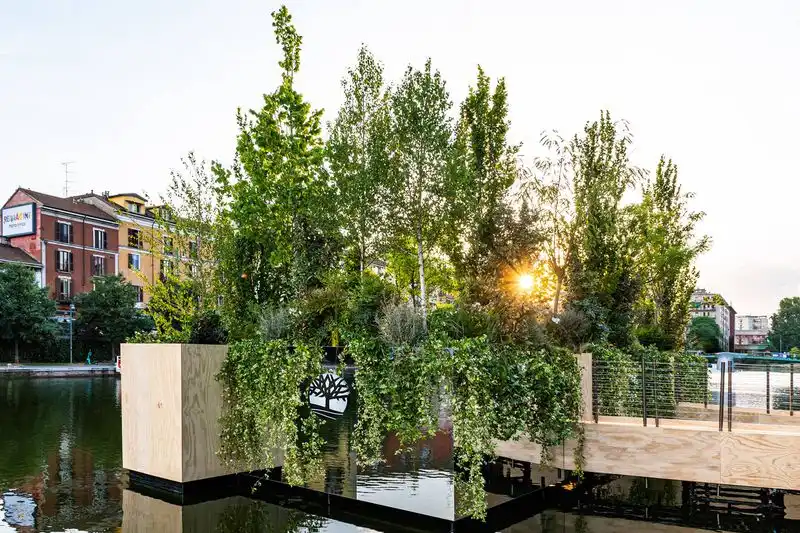
Bogulavsky Birch is a unique variety known for its compact, bushy growth and light brown bark. It’s well-suited for colder climates and adds a unique texture to any garden.
The leaves are small and dense, creating a lush canopy that is particularly attractive in the spring and summer. In autumn, they turn a golden hue. This birch is native to Siberia, and its hardiness makes it ideal for gardeners looking to add interest in cooler regions. Its adaptability and unique appearance are key attractions.
Betula Utilis
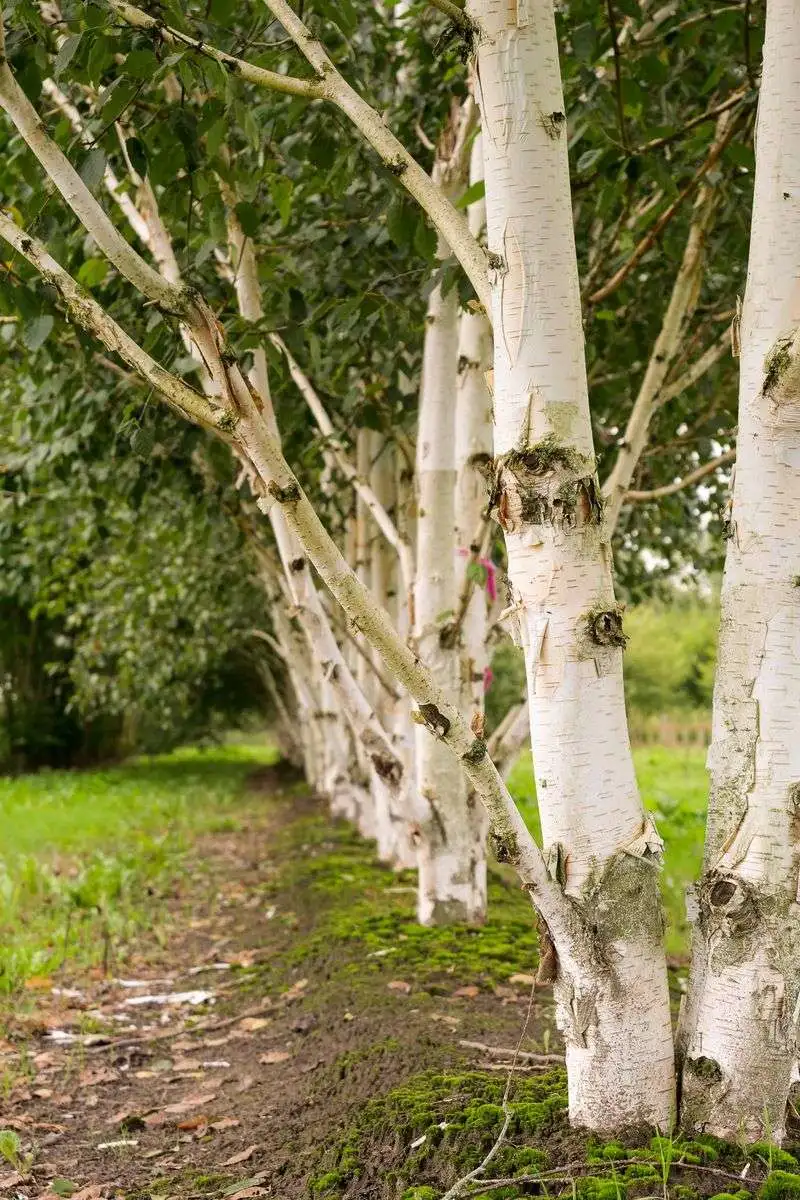
Betula Utilis, or the Himalayan Birch, is renowned for its smooth, white bark and slender, elegant branches. The bark peels away in beautiful strips, revealing a fresh layer beneath.
This birch is ideal for ornamental planting, providing a bright focal point in gardens. The leaves are a rich green, turning a vibrant yellow in the autumn. Betula Utilis is well-suited to cooler climates and prefers well-drained soils. Its striking bark and graceful form make it a favorite among landscape designers looking for elegance and simplicity.
Manchurian Birch
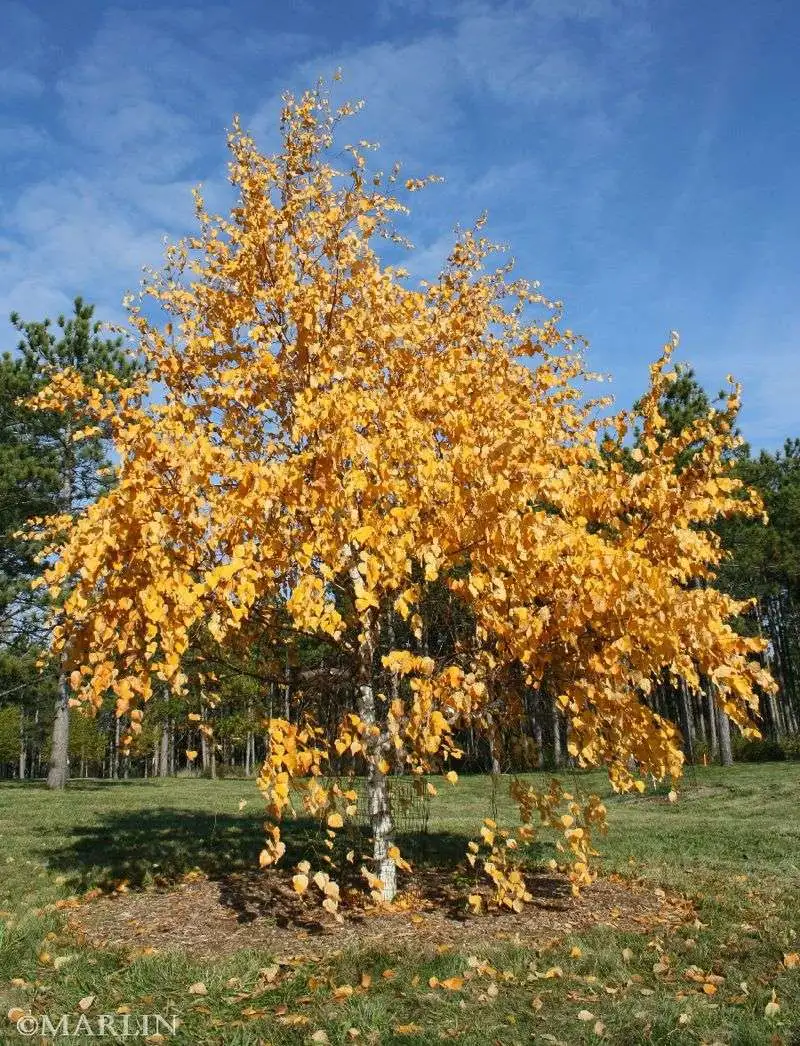
Manchurian Birch is native to Eastern Asia and is appreciated for its pale, smooth bark and dense foliage. This birch thrives in a variety of climates, adding elegance to both gardens and natural forests.
The leaves are a fresh, vibrant green, creating a lush canopy that provides excellent shade. As autumn approaches, the foliage turns a striking yellow, offering a seasonal display of color. Its adaptability to different environments and its beautiful form make the Manchurian Birch a versatile choice for any landscape.
Alaskan Paper Birch

Alaskan Paper Birch is a striking tree known for its creamy white bark, which peels in thin, delicate strips. This tree is not only beautiful but also well-suited to cold climates, making it ideal for northern gardens.
The leaves are a dark green during the growing season, providing a lovely contrast to the white bark. In the fall, they turn a bright yellow, adding seasonal interest. This birch is particularly popular in Alaskan landscapes, where it contributes to the natural beauty of the environment.
Cherry Birch
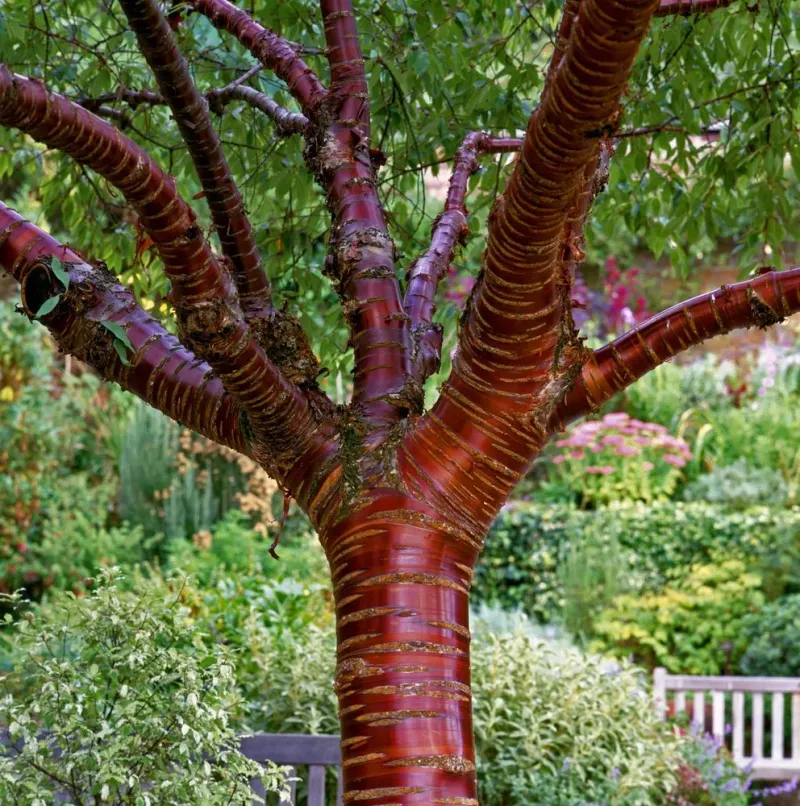
Cherry Birch is named for its glossy, cherry-like bark that adds a unique visual element to any garden. The bark is smooth and dark, providing a beautiful backdrop to the tree’s rich, green leaves.
In spring and summer, the foliage is dense and vibrant, offering ample shade. Come autumn, the leaves turn a warm yellow, enhancing the tree’s decorative appeal. Cherry Birch is native to eastern North America and thrives in well-drained soils, making it a versatile choice for both ornamental and natural plantings.

